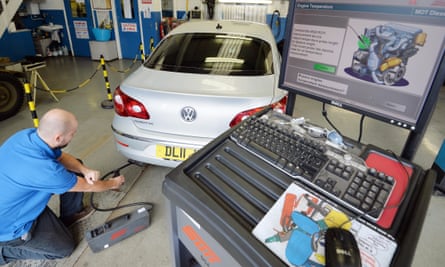1. What is it?
It comes into force on 8 April 2019, and will initially cover the existing congestion charge zone in central London, but will operate 24 hours a day, seven days a week. From 25 October 2021, it will expand to an area bounded by the north and south circular roads.
2. How much will it cost?
Vehicles, including motorbikes, that don’t meet the tighter exhaust emissions standards will have to pay £12.50 every day that they are used within the ULEZ – the city centre one from this April, the bigger one from October 2021 – plus the £11.50 congestion charge if they enter the city centre between Monday and Friday, 7am to 6pm. Failure to pay will result in a fine of £160. Lorries will be charged £100 a day, with a £1,000 fine for failing to pay on time.
3. Will my car be affected?
Broadly speaking, pre-2015 diesels and pre-2006 petrol cars will fall foul of the new standards. To find out if your car or bike is affected, go to the “Check your vehicle” page on the TfL website. So far, 1.3 million people have checked to see if they comply with the ULEZ standards.
4. Are cabs getting away with it?
Yes, to a degree. London’s 21,000 black cabs are among its dirtiest vehicles, diesels that pump out 16% of all transport nitrous oxide (NOx) in central London. Yet this powerful lobby group have been given an exemption, unlike London’s police cars, ambulances and fire engines, many of which will have to be replaced to meet the new standards.
TfL says that all new taxis must be zero-emission, but existing ones – even a diesel bought in 2017 – can run for up to 15 years without being subject to the charge.
5. Are disabled people exempted?
Yes. Keepers of vehicles registered with a “disabled” or “disabled passenger vehicles” tax class will benefit from a “sunset period” after the ULEZ starts, meaning they won’t have to pay until 26 October 2025.
6. How will dirty cars be caught in the wider zone? Will thousands more cameras have to be erected?
TfL has about 1,000 cameras for the congestion charge zone, but the expanded ULEZ will be 18 times bigger. Quite how small hops within the expanded zone will be monitored is not yet clear. TfL has not said how many more cameras will be put in place, but it may use “existing infrastructure and transportable cameras”. It will be interesting to see if this includes the ANPR cameras that currently exist on many buses to catch cars wrongly using bus lanes.
7. Will there be a scrappage scheme for older vehicles?
Yes, but only for small businesses using dirty vans. Just before Christmas the mayor, Sadiq Khan, announced a £23m scrappage scheme for businesses with 10 or fewer employees to switch to cleaner vehicles. Khan now wants the government to step up and fund an extension of the scrappage scheme to low income households.
8. I live in the C-charge zone. Do I get a residents’ discount?
Yes – but for a limited time only. If your vehicle is registered for the residents’ C-charge discount you will get a 100% discount off the ULEZ charge until 24 October 2021.
9. How will I know I’ve entered the ULEZ?
There will be no barriers or toll booths. Cameras will read number plates and check if the vehicle meets the ULEZ standards. TfL is erecting hundreds of road signs warning motorists of the start of the ULEZ at the current congestion charge zone.

10. What are the actual emission standards my vehicle has to meet?
The ULEZ charges will be enforced based on the declared emissions of the vehicle rather than the age, although a rule of thumb is that it affects diesels made before 2015 and petrol cars before 2006.
Petrol cars must meet the Euro 4 standard on emissions to drive into the ULEZ, while diesels must meet Euro 6. Motorcycles and mopeds must meet the Euro 3 standard. For diesels, the Euro 6 standard sets a maximum NOx emission at 80mg/km, compared with the 180mg/km level that was required for cars that met the previous Euro 5 emissions standard. This is why so many diesels, even relatively new ones, will fail the ULEZ test.
11. Won’t Brexit mean we dump the Euro standards?
No. TfL says the use of Euro standards will not be affected in the short to medium term by Brexit as manufacturers will still make vehicles to the same standards and with the same classifications.
12. Will it cut traffic in London?
TfL is forecasting a cut of 5% in overall car traffic in central London once the ULEZ comes into force. The congestion charge zone, introduced 15 years ago, has resulted in 30% fewer private vehicles entering the city centre. But that has been offset by a rise in Uber and other private hire vehicles, from 4,000 a day to 18,000. They currently don’t have to pay the congestion charge, but will have to do so from 8 April 2019.
